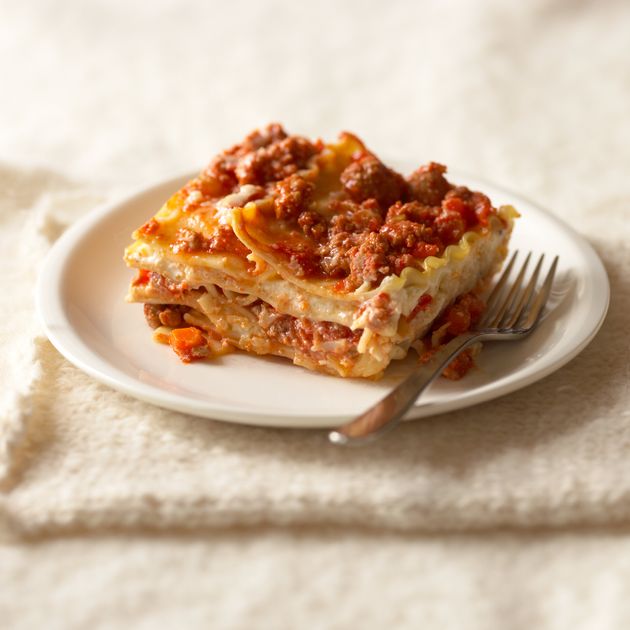
Not all foods make good leftovers. Sandwiches get soggy (except Ross Geller’s Moist Maker) and salads wilt, and that’s why leftovers are so often disliked. But leftover lovers know that some foods, like soups and casseroles, seem to actually taste better the second day.
“I feel that’s the case with pizza,” said Chris Simons, associate professor of sensory science at the Ohio State University College of Food, Agricultural and Environmental Sciences.
There are a few reasons some foods taste better left over, he said. Time gives the flavours in dishes a chance to meld, and refrigeration slows some of the chemical reactions that occur in foods, which could enhance flavour rather than degrade it too quickly.
“So, there’s an opportunity for those flavours to marry a little bit longer and sort of continue to evolve, which can make them more flavourful,” Simons explained. “So, I do think that’s certainly possible that some foods taste better left over in some cases.”
While the U.S. Department of Agriculture suggests eating leftovers within three or four days, the second or even third day may be the peak time to enjoy some leftovers. We asked food scientists to break down some of the scientific reasons certain leftovers taste better than others.
Foods undergo chemical reactions when they age in the fridge
The chemical reactions that make foods go bad also sometimes improve the texture and flavour. Oxidation, for example, occurs when foods come into contact with oxygen (think of a sliced apple that turns brown when you leave it out). Depending on the food and how it’s stored, oxidation could make foods mushy or taste rancid, or it could actually make the food taste better. (Onions, potatoes and broccoli are a few that will taste better left over.)
The reheating process is going to liberate some of the flavor molecules that may be, for example, trapped inside fats or inside starch or vegetables. Reheating could certainly liberate some volatile flavor molecules and enhance the flavor in that way.Guy Crosby, food scientist
“As foods start to metabolise or change, different compounds are being generated and different types of reactions are taking place within that food matrix,” Simons said. “That allows new flavours to either be created or be released or [it creates] textural changes, so it literally physically changes the structure of the food.”
Refrigerating leftovers slows down these chemical reactions, which is why you can still eat the foods the next day, he explained. Left out at room temperature, the process would happen much faster, and the food would spoil. The USDA suggests throwing away foods left out at room temperature for more than two hours, and foods left at temperatures higher than 90 degrees Fahrenheit after an hour.
Which foods are better as leftovers?
Time and oxidation generally aren’t kind to foods, but Guy Crosby, a food scientist and member expert with the Institute of Food Technologists, says some foods may be perceived as getting better with time.
Of course that depends on individual tastes, such as how much you like bitter or spicy foods, and what you consider “better.”
Cruciferous vegetables like kale, broccoli, cauliflower and cabbage, and allium vegetables, including onions, leeks and garlic, are good examples. They can be bitter and harsh when raw or freshly cooked, but Crosby said the sulphur compounds they contain oxidise easily, mellowing over time.
“If you have a food you made with them, a soup or a dish you put in the refrigerator, slowly overnight, the sulphur atoms and those flavour molecules will add an oxygen atom and they will oxidise, and that generally mellows out the flavor,” he explained.
Starchy vegetables, like potatoes, may get a little sweeter over time, too. The starch slowly breaks down the sugars, or glucose, in these foods, Crosby said.
Protein-rich foods may also taste better with time. Proteins break down and release amino acids, such as glutamate, which enhance savoury or umami tastes. Reheating also affects proteins by changing their flavour molecules, potentially improving taste, Simons said.
Peppers may become more appealing in leftover dishes, especially if you don’t like spicy foods. Crosby said oxidation reduces the amount of the compound capsaicin in the peppers, making them less spicy. Other spices, like turmeric, black pepper and coriander, are also sensitive to air and may lose their intensity over time.
In some cases, reheating leftovers can bring out even more flavour
Soups, stews and casseroles often contain ingredients like onions, garlic and spices, which explains why they seem to taste better left over. They’re also liquid-based, which prevents the dish from drying out and creates fewer textural changes. Simons said this keeps these dishes appetising the next day.

Refrigerating leftovers slows chemical reactions, preserves food, and mellows out some flavours. Conversely, warming up leftovers could make them even more flavourful.
“The reheating process is going to liberate some of the flavour molecules that may be, for example, trapped inside fats or inside starch or vegetables,” Crosby said. “Reheating could certainly liberate some volatile flavour molecules and enhance the flavour in that way.”
Just make sure to reheat foods to an internal temperature of 165 degrees F to prevent illness.
Memories of a great meal may make leftovers taste better
Perception might play a role in why some leftovers taste better, too. If you had a delicious dinner, that memory and the excitement of eating the leftovers for lunch the next day could influence how they taste.
Taste is created in the mouth, but flavour is perceived in the brain, Crosby said. That’s why you likely crave the comfort foods you grew up eating, for example. The same applies to leftovers.
“It’s going to influence people and make them think about wanting to eat something because it’s a food that they’ve learned to like,” he explained. “And, their brain is telling them this is something that you really want to enjoy, and so you want to eat it again.”
Context also shapes how people feel about foods, said Simons, who researches the role of context and food perception.
“If you had a really enjoyable meal with friends and it was a great time, that information is being consolidated into our memory,” he said. “That experience, for sure, is going to shape your subsequent evaluations of meals. Context is really an important element of our enjoyment of food.”


